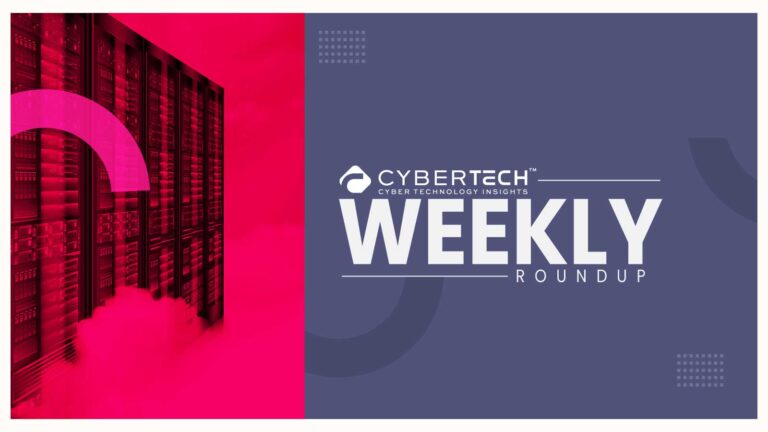At Cyber Technology Insights, we track the threats that define the future of digital security. Scattered Spider’s resurgence is one such threat—too sophisticated, too disruptive, and too important to ignore.
In the ruthless theater of modern cyber warfare, few names strike fear quite like Scattered Spider. Once seen as a fringe collective of young hackers armed with social engineering tricks, this group has evolved into a technologically formidable and ruthlessly persistent cyber threat. And over the past month, they’ve returned: more aggressive, more organized, and disturbingly more effective.
Their recent blitz has left a trail of digital devastation across some of the most critical sectors in North America and the UK. From airline operations grinding to a halt to grocery giants dealing with outages at checkout counters, Scattered Spider has proven once again that modern infrastructure is only as strong as its weakest login.
Let’s unpack who they are, what they’re doing, and why security professionals around the world are sounding the alarm — again.
Who Is Scattered Spider?
Scattered Spider, also tracked as UNC3944, is a cybercrime group primarily composed of English-speaking threat actors, some allegedly as young as 17. What sets them apart is not just their age or geographic spread, but their mastery of social engineering and identity-centric attacks.
They don’t smash through firewalls. They walk in through the front door, usually with someone else’s credentials.
CyberTech News and Insights: Quantum Computing Threats Make Cybersecurity a Top Priority for Global Investors
Initially known for SIM swapping attacks and impersonation schemes targeting help desks, they’ve escalated their game by moving deeper into enterprise environments using living-off-the-land techniques, advanced cloud persistence, and hands-on-keyboard attacks that mimic legitimate administrative behavior.
In short, they’re digital chameleons, capable of blending in with your IT team long enough to cause real harm.
Inside the Spider’s Web: How the Attack Unfolds
Scattered Spider’s attack methodology is a masterclass in social engineering and identity exploitation. They typically begin by impersonating internal employees or third-party vendors, using tactics like phishing, SIM swapping, or vishing (voice phishing) to gain initial access.
Once inside, they move laterally through the network by abusing Single Sign-On (SSO) systems and exploiting misconfigured identity and access management (IAM) setups. Their hallmark is “hands-on-keyboard” persistence—they manually navigate environments, escalate privileges, and deploy backdoors, all while mimicking legitimate user behavior to evade detection. Instead of malware, they often rely on living-off-the-land techniques, using native admin tools like PowerShell and RDP to maintain stealth. This identity-centric approach makes them exceptionally hard to detect with traditional signature-based tools, giving them ample time to exfiltrate sensitive data or deploy ransomware at maximum impact.
What’s Happening Now? Recent Attacks and Disruptions
By mid-2025, Scattered Spider’s resurgence had already inflicted measurable damage, with over a dozen confirmed breaches across Fortune 500 companies and an estimated $120 million in operational losses spanning retail, aviation, and insurance sectors:
- Retail Disruptions: Multiple major U.S. retail chains reported POS (point-of-sale) outages tied to credential misuse and internal system compromise.
- Airline Meltdowns: At least two North American carriers experienced significant flight delays and cancellations due to back-end system infiltration.
- Insurance Providers Breached: Sensitive PII (personally identifiable information) was exfiltrated and allegedly auctioned on dark web forums, leading to massive customer trust fallout.
- Cross-Border Coordination: Reports suggest simultaneous breaches in Canadian and U.K.-based enterprises, pointing to a coordinated strike rather than opportunistic attacks.
Despite multiple arrests of suspected Scattered Spider affiliates earlier this year, the group’s decentralized structure and ability to recruit new talent through underground forums seem to be keeping its operations disturbingly intact.
What the Experts Are Saying
To understand the gravity of this threat, we spoke to Lucie Cardiet, Cyberthreat Research Manager at Vectra AI, whose work focuses on tracking ransomware evolutions in real time.
“Scattered Spider has emerged as one of the most sophisticated and persistent threat groups targeting enterprises today – and they’ve been on a hacking spree the past month that has caused major disruptions to businesses across the U.S., the U.K., and Canada,” says Cardiet.
“The hacking group’s evolution – from SIM swapping and social engineering to advanced cloud persistence and hands-on-keyboard attacks – reflects a deep understanding of modern identity and infrastructure.”
Top-read CyberTech Guest Article: Rise of Vibe Engineering from AI-Assisted Coding is a Double-Edged Sword for Security
“They frequently exploit weak authentication, leverage stolen credentials, and maintain long-term access across hybrid environments, all while evading traditional detection methods.”
Cardiet emphasizes a critical mindset shift for defenders:
“Preparedness is not about preventing every breach – it’s about detecting and disrupting adversaries before they do real damage.”
How Can Enterprises Protect Themselves?
Security leaders aren’t powerless but they do need to rethink the way they define security hygiene.
Identity Hygiene Is Non-Negotiable
Outdated access protocols have become an open invitation for attackers. Over 60% of breaches in the past year exploited weak or misconfigured identity systems, giving groups like Scattered Spider an easy foothold into enterprise networks.
Regularly audit user access, enforce least-privilege principles, and eliminate dormant accounts.
Modern MFA Is a Must
Scattered Spider thrives on bypassing outdated MFA systems. Consider phishing-resistant solutions like FIDO2 tokens or app-based authenticators over SMS-based codes.
Continuous Monitoring
Static rules won’t catch dynamic attackers. Use AI-driven behavior analytics to detect subtle deviations in user activity, particularly within cloud and hybrid environments.
Response Drills
Detection is one thing. Escalation is another. Build muscle memory through red team exercises, simulate attacks, and train staff to recognize unusual internal requests.
The financial and operational toll of Scattered Spider-style attacks is staggering.
Companies have suffered multi-million dollar losses from disrupted logistics, compromised customer data, and prolonged system outages, not to mention regulatory penalties and reputational damage that ripple for years.
Beyond the immediate impact, the long-term erosion of digital trust can cost enterprises future business and investor confidence. For CISOs, the path forward lies not in traditional perimeter defenses but in identity-first security architectures.
Tools like Vectra AI for behavior-based threat detection, CrowdStrike Falcon for endpoint and identity protection, Okta Identity Governance for access control, and Microsoft Sentinel for unified SIEM/SOAR visibility should be central in their stack. These platforms enable security teams to detect subtle anomalies, correlate signals across environments, and act before attackers can escalate privileges or exfiltrate data.
FAQs: Scattered Spider, Explained
Q: Why does Scattered Spider target identity systems instead of software flaws?
A: They exploit human trust and over-permissioned accounts—it’s more scalable and harder to detect than brute-force methods.
Q: Are these attackers state-sponsored?
No official attribution to a nation-state exists. Scattered Spider appears to operate independently, motivated by financial gain and notoriety.
Q: How are they recruiting new hackers?
Primarily through Telegram, Discord, and dark web forums. They often share tools, sell access, and even mentor less-skilled actors.
Q: Is zero-trust architecture enough to stop them?
Zero trust is foundational but not foolproof. It must be paired with dynamic threat detection, strong MFA, and user behavior analytics.
Q: What industries are most at risk right now?
Any organization with a hybrid cloud infrastructure, high volumes of customer data, or decentralized IT teams — especially retail, travel, insurance, and healthcare.
Final Thought
Scattered Spider isn’t just another hacking group; they’re a mirror reflecting our collective vulnerabilities in identity management, cloud complexity, and digital trust. For Gen Alpha cybersecurity professionals and enthusiasts, this group represents the kind of adversary you’ll likely be battling for the next decade.
Let their return be your wake-up call. The front line of cyber defense isn’t just at the firewall; it’s in your identity architecture, your incident response plans, and your ability to evolve faster than the threats do.
Cyber Technology Insights : Adaptiva Adds Autonomous Patching for Red Hat Enterprise Linux
To participate in our interviews, please write to our CyberTech Media Room at sudipto@intentamplify.com








